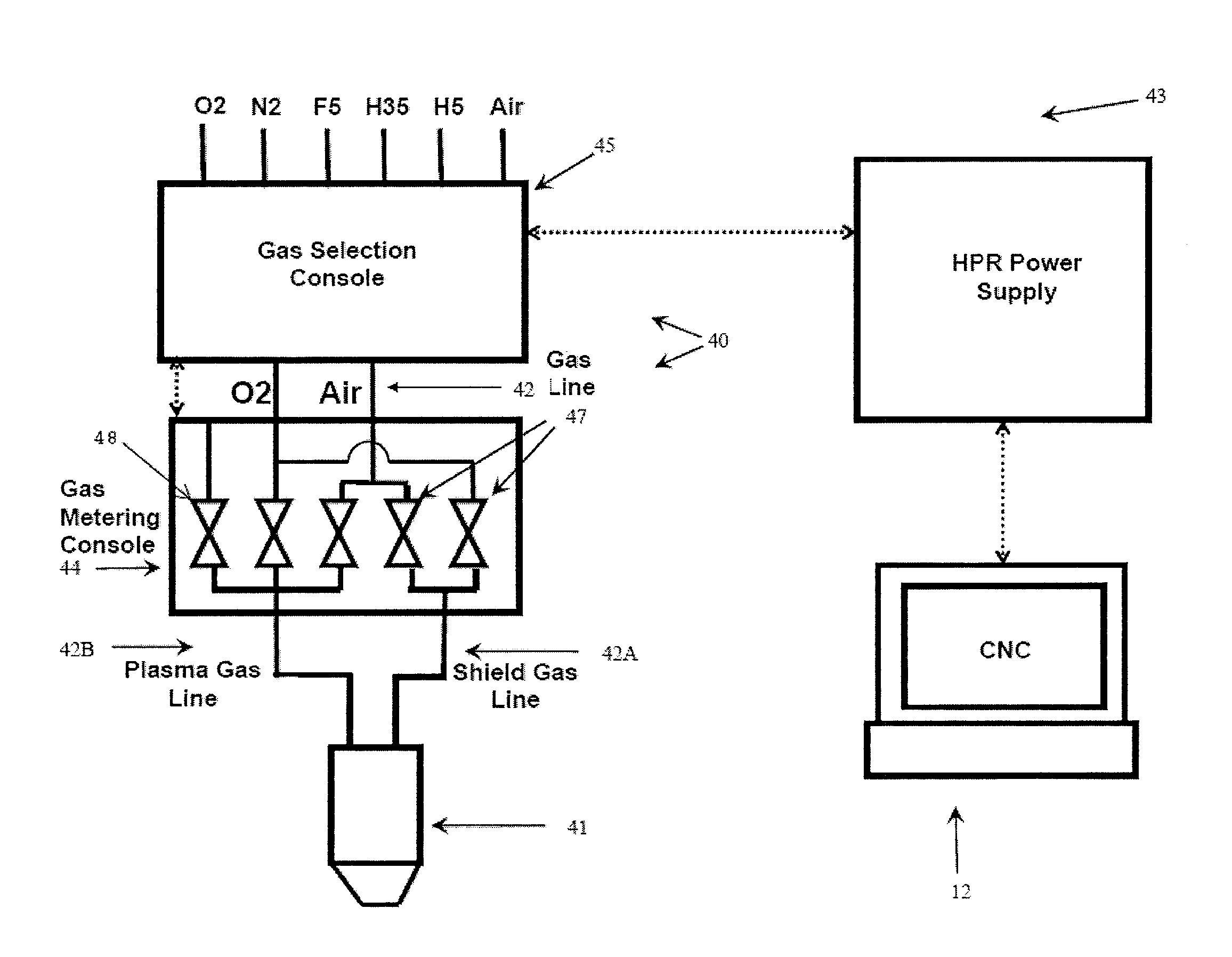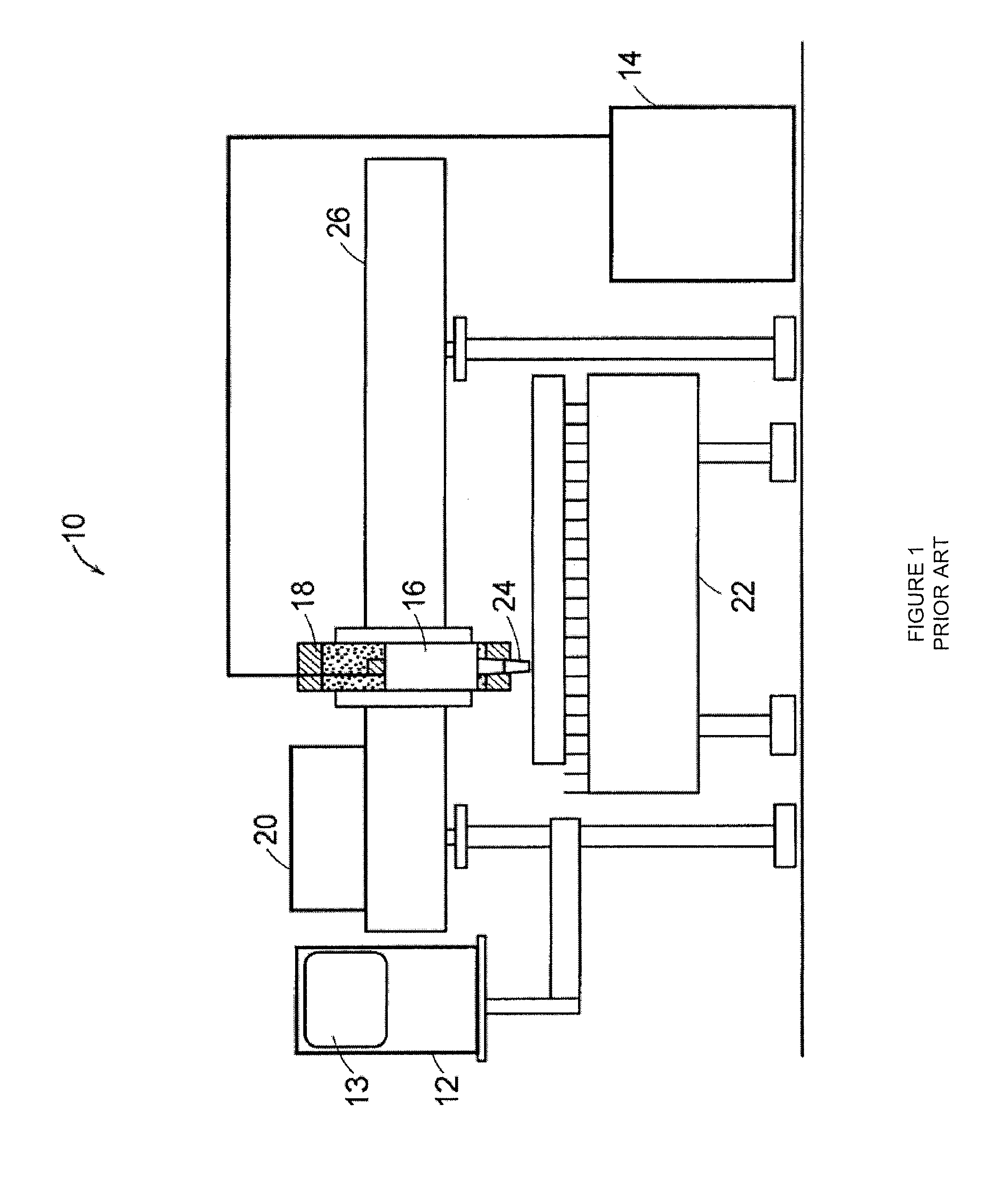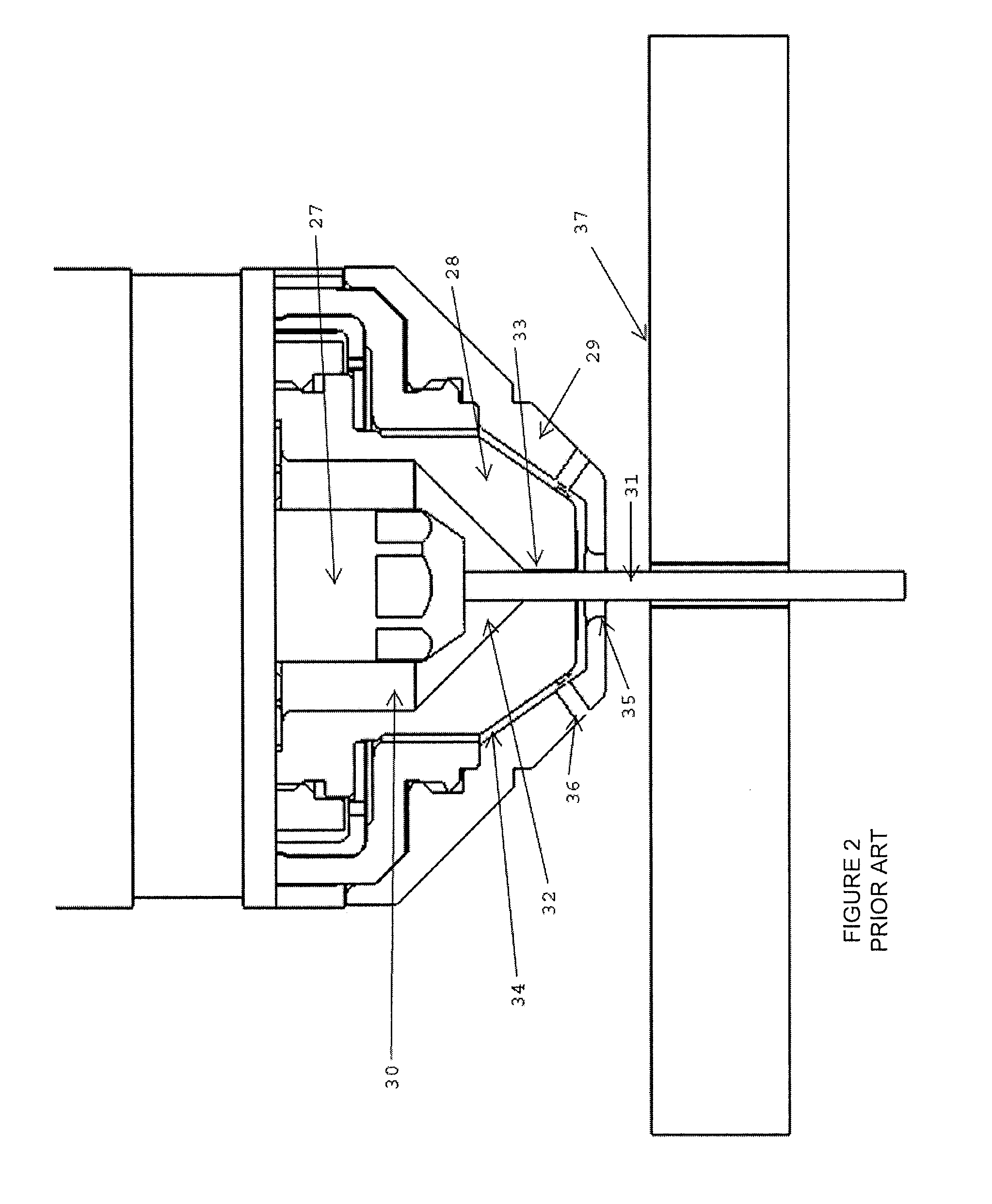Method And Apparatus For Cutting High Quality Internal Features And Contours
- Summary
- Abstract
- Description
- Claims
- Application Information
AI Technical Summary
Benefits of technology
Problems solved by technology
Method used
Image
Examples
Embodiment Construction
[0101]A “hole feature” (e.g., hole) can be defined as a shape having a diameter (or dimension) to workpiece (plate) thickness ratio of approximately 2.5 or smaller. FIG. 3, by way of example, shows a 6×6 inch square piece of 0.5 inch thick plate steel 100 that in one embodiment, could be cut from a larger workpiece (not shown). A one inch diameter hole feature 105 in the 0.5 inch thick plate of steel 100 would have a ratio of 2. A hole / hole feature, as used herein, can be categorized as a small internal part features that are not necessarily round, but where a majority of the features have dimension that are about 2.5 times or less than the thickness of the materials (e.g., a 1 inch square 110 in the ½ inch plate steel 100). Features such as “contours” can include both straight 115 or curved 120 cuts.
[0102]As noted above, hole features cut using prior art methods can result in defects, such as divots (e.g., too much material taken), protrusions (e.g., not enough material taken), “be...
PUM
| Property | Measurement | Unit |
|---|---|---|
| Time | aaaaa | aaaaa |
| Thickness | aaaaa | aaaaa |
| Composition | aaaaa | aaaaa |
Abstract
Description
Claims
Application Information
 Login to View More
Login to View More - R&D
- Intellectual Property
- Life Sciences
- Materials
- Tech Scout
- Unparalleled Data Quality
- Higher Quality Content
- 60% Fewer Hallucinations
Browse by: Latest US Patents, China's latest patents, Technical Efficacy Thesaurus, Application Domain, Technology Topic, Popular Technical Reports.
© 2025 PatSnap. All rights reserved.Legal|Privacy policy|Modern Slavery Act Transparency Statement|Sitemap|About US| Contact US: help@patsnap.com



